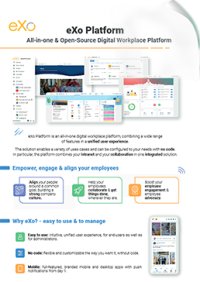

FREE DATASHEET
Download the eXo Platform Datasheet and discover all the features and benefits
In the past, developers had no option but to save documents on a central server and create folders that could be accessed on a permission basis. However, as Microsoft SharePoint became the norm in a lot of organizations, such systems became obsolete. Now, technology is such that it is quite simple to set up centralized systems that are also easy to access.

A perennial industry player, Microsoft SharePoint offers the most comprehensive collaboration and content management features for enterprises. While SharePoint has various capabilities, it may not be appropriate for every organization. Some organizations may require a simpler, easier, and less expensive solution, or one that is customized more closely to their needs.
This article presents the 12 best SharePoint alternatives with their unique offers and features that have their merits and demerits.
Now that various alternatives have entered the market, the number of available alternatives to SharePoint can be extremely staggering. But with careful consideration, many of these alternatives prove to be more cost-effective, flexible, and better suited for specific business needs. It’s a good idea to explore these options before committing to a large-scale, expensive solution.
While SharePoint offers capabilities like content management, enterprise search, and business process automation, it’s important to recognize that many organizations don’t require such a broad and complex set of tools. Adopting eXo Platform, for instance, will spare the companies the risks and expenses which come with the excessive reliance on a platform that has lost relevance to their needs and objectives.
This change also follows from the acceptance of why some of the business cases used to justify the purchase of SharePoint do not exist anymore. Exploring more agile and affordable alternatives is the key to ensuring that your business stays nimble and cost-efficient in an ever-evolving digital landscape.
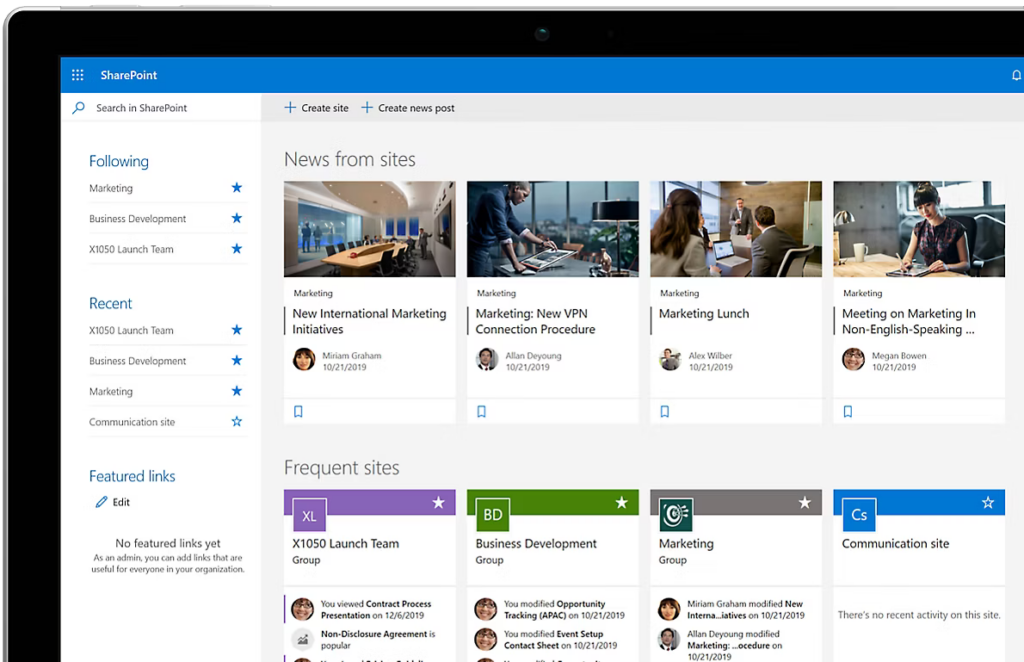
Microsoft SharePoint is very popular as a content and information management platform, which not only allows managing documents but also other information such as web pages and project management data. SharePoint is built on top of Windows SharePoint Services and hence, organizations need this service to be able to use the features of SharePoint. There are three main versions of the product:
Given its overall features for document management and collaboration SharePoint is also preferred by many organizations, though it is not a solution that fits all companies. For some businesses, SharePoint may be perceived as a costly service while for others, the functionalities may be more than necessary. For such organizations, it may be helpful to look for other options that may be a better fit since there are a lot of options available that can be equally sophisticated or better.
In this article, we’ll explore 12 top alternatives to Microsoft SharePoint, starting with eXo Platform. We’ll provide a detailed breakdown of each platform’s key features, pros, and cons, along with screenshots to help stakeholders make an informed decision on the best solution for their needs.
Before purchasing a license and teaching employees how to use SharePoint, it is important to know its primary benefits first. SharePoint has numerous tools: templates for building intranet, extranet, and internet sites, document libraries, workflow support, and e-commerce search. It allows for modification even after coupling with the current systems in use, enhancing user efficiency and the secure sharing of restricted materials. SharePoint enables the storage of business information and the simple retrieval of reporting systems due to its use with SQL Server.
In the end, SharePoint helps manage the traffic of emails and redundant information. Still it serves the role of a high class managerial reporting system. Quite the reverse, the difficulties and expenses for using SharePoint would probably make the companies consider other options providing the same benefits but with greater ease and lower cost.
SharePoint is a versatile platform that helps organizations collaborate, manage content, and communicate more effectively. Here’s a closer look at its standout features that make it a top choice for businesses:
SharePoint is a widely used platform for collaboration, content management, and enterprise communication. While it offers many benefits, there are also some challenges to consider. Here’s a breakdown of its pros and cons:
SharePoint is a powerful platform with extensive capabilities, but its effectiveness depends on how well it aligns with your organization’s needs and technical expertise. It’s an excellent choice for businesses deeply integrated into the Microsoft ecosystem, but it requires thoughtful planning and management to unlock its full potential.
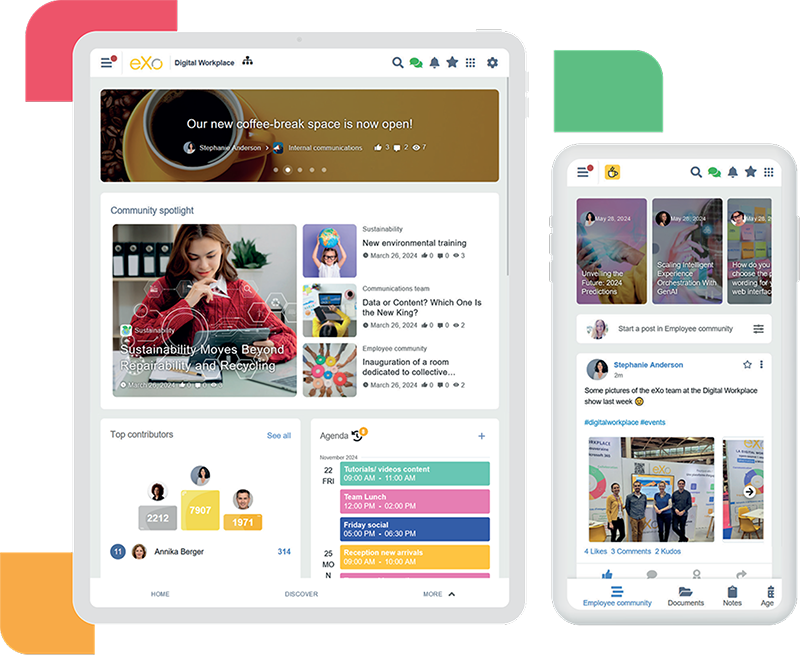
eXo Platform is an open source digital workplace solution that promotes communication, collaboration, and knowledge sharing. Its focus on social collaboration and flexibility makes it one of the best alternatives to Microsoft SharePoint, especially for organizations looking to create more engaging workspaces.
One well-rounded option that is considered as a great alternative to Microsoft SharePoint, eXo Platform takes the centre stage thanks to its wide range of collaboration tools and an easy-to-use interface. It is built to deliver a unified experience for large organizations aiming to improve team collaboration, knowledge sharing and social networking throughout their enterprises.
eXo Platform stands out as a comprehensive collaboration solution designed to enhance team productivity and engagement Key features of eXo Platform include a robust set of collaboration tools such as document management team workspaces forums and wikis Moreover it integrates seamlessly with other enterprise systems like ERPs CRMs and HR software making it easier to adopt without disrupting existing workflows eXo Platform also offers a user-friendly interface with customizable dashboards and advanced search capabilities which significantly improve user experience
eXo Platform stands out for its rich feature set, user-friendly interface, and customizable design, making it suitable for enterprise-level use. Its open-source nature supports flexibility and integration with other systems. While powerful, it may require onboarding for new users, and some advanced features are only available in the paid enterprise edition. Key strengths include strong collaboration tools, social features, and customizable dashboards that enhance user engagement and workflow efficiency
Despite its numerous advantages eXo Platform may present a steep learning curve for new users who are not accustomed to such an extensive suite of features Additionally while the platform is highly customizable the initial setup and configuration might require significant time and technical expertise compared to other alternatives.

Open Source Alternative to Microsoft 365
Empower your organization with eXo Platform to break free from Microsoft dependencies and enhance collaboration with innovative solutions
Open Source Alternative to Microsoft 365
Empower your organization with eXo Platform to break free from Microsoft dependencies and enhance collaboration with innovative solutions
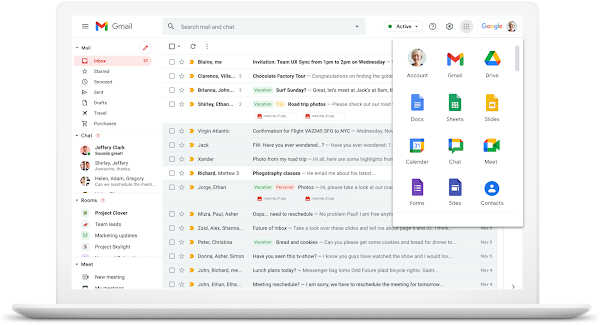
With Google Workspace (formerly G Suite) rising to power in the world of collaboration tools. Google Workspace is a suite of online productivity tools, and it allows businesses to manage large data securely using Google cloud services.
Google Workspace offers a suite of cloud-based collaboration tools, including Google Docs, Sheets, and Drive. It’s an excellent choice for businesses that need cloud-based collaboration without the complexity of SharePoint.
Google Workspace is a bundle of productivity tools for cloud services and applicationsincluding all the popular Google apps and products. A robust solution for cloud storage and file sharing with Google Drive The ability to collaborate on a document in real-time is the standout feature of Google Docs, Sheets, and Slides. Google Meet and Google Chat allow for easy chat communication, or messaging in addition to virtual meetings that will also seamlessly integrate with the other apps.
With its AI-powered functions like Smart Compose and Smart Reply in Gmail etc., Google Workspace stands out for having better automation features which help to save time, as well increases the efficiency of communication. It also includes strong security protocols, such that user identity and data are protected in accordance with industry standards.
With this, Google Workspace is scalable in nature. The flexible pricing plans are perfect for anything, whether it be a freelancer or the largest corporation. Its compatibility with many third-party apps also increases the flexibility.
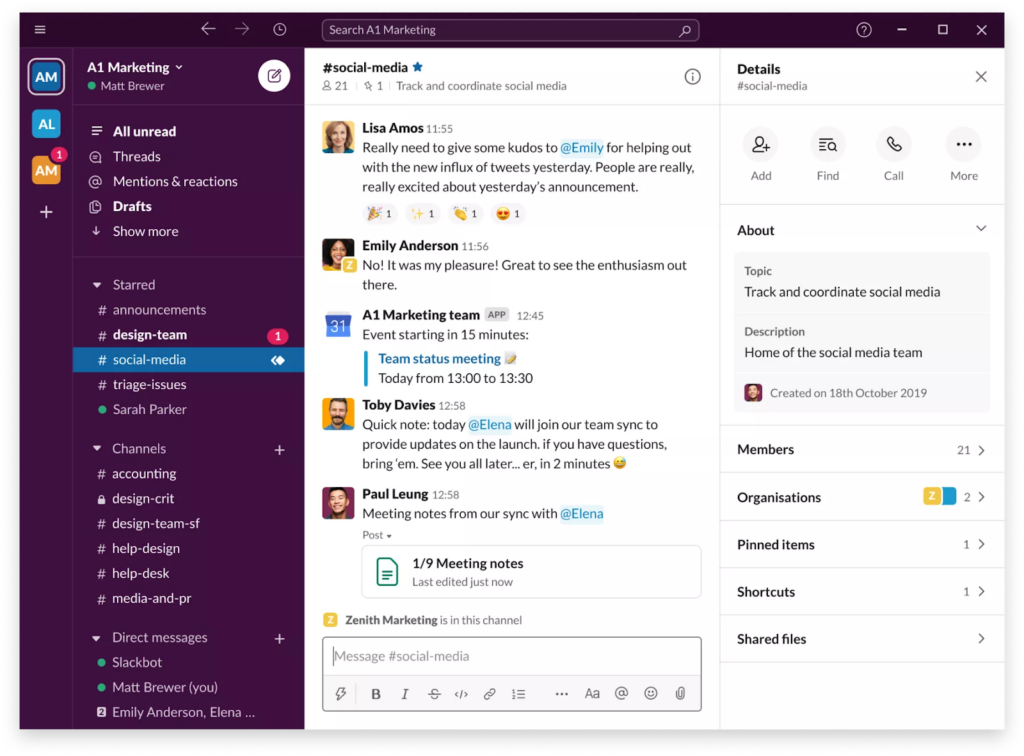
Slack, primarily known for its team communication features, has expanded its capabilities to include file sharing, project collaboration, and integrations with third-party tools. While it lacks SharePoint’s document management depth, it excels in fostering communication.
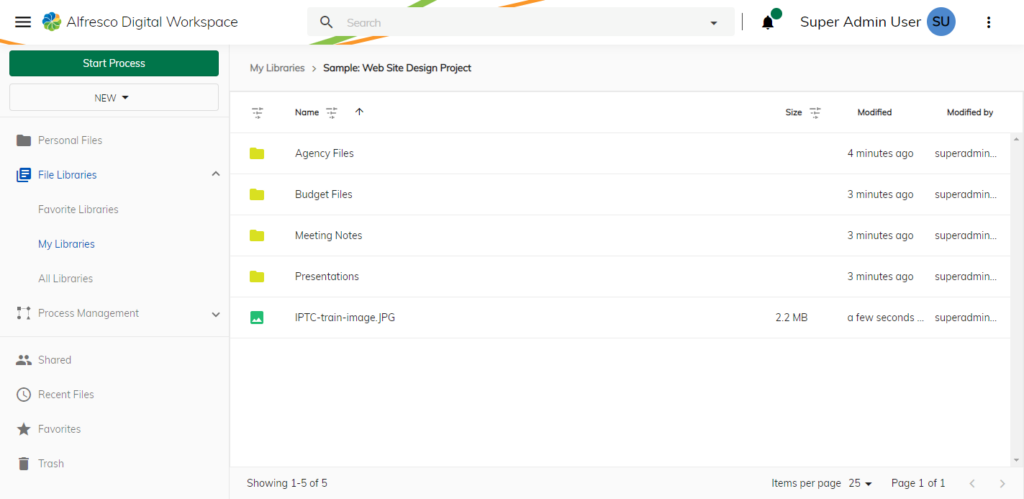
Alfresco is a robust enterprise content management (ECM) platform that serves as a strong alternative to SharePoint, particularly for organizations needing advanced document management, workflow automation, and compliance features. Unlike Trello (which focuses on task management), Alfresco directly competes with SharePoint in file handling, collaboration, and governance.
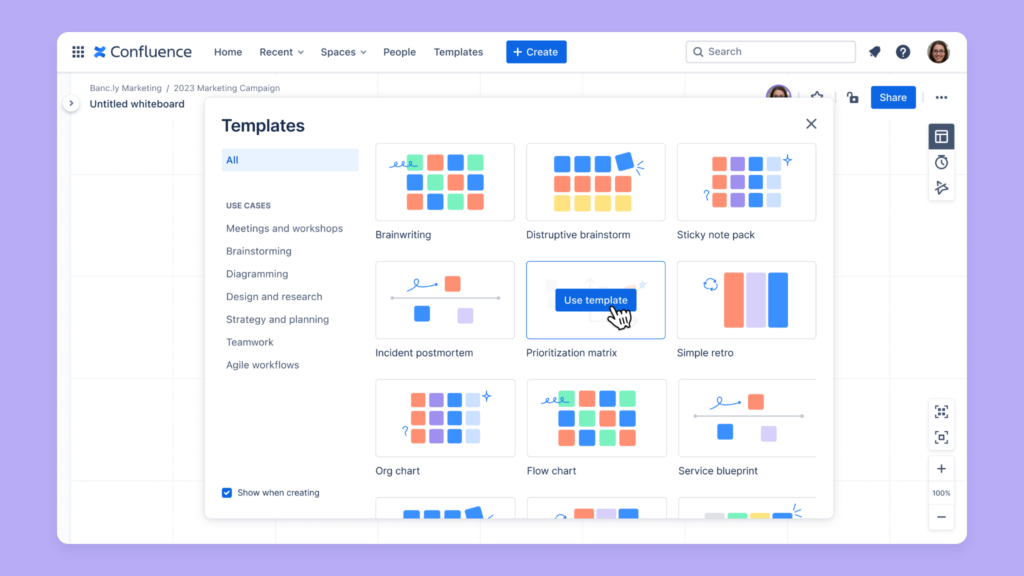
Confluence, part of the Atlassian suite, is a knowledge management and collaboration tool primarily focused on documentation and project collaboration. It’s well-suited for teams already using Jira for project management.
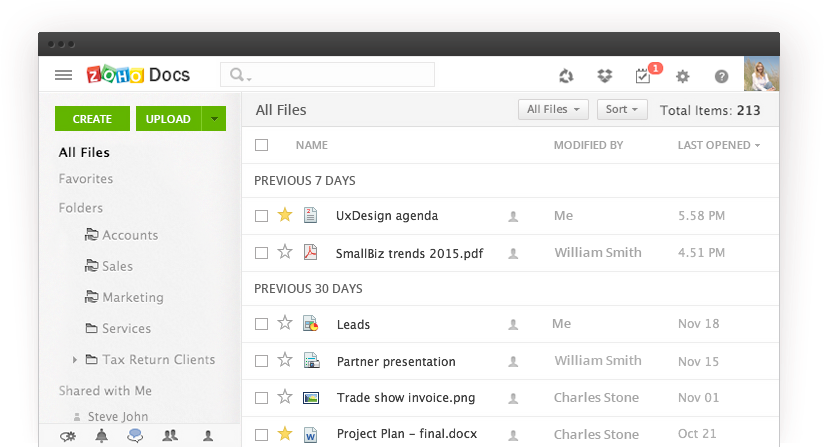
Zoho Docs is another robust solution to Microsoft SharePoint and offers an inclusive set of office applications for businesses to enhance productivity, as well as collaboration.
Zoho Workplace is a suite of cloud-based tools designed for communication, collaboration, and productivity. It’s a great alternative for smaller businesses that need a simpler, more affordable option compared to SharePoint.
Zoho Docs features an ample number of tools necessary to process for document management and team collaboration. Zoho Writer; Zoho Sheet; and Zoho Show enable teams to work on word processing, spreadsheeting, and presentation creation respectively in real-time. It also consists of Zoho WorkDrive which helps any teams to store and share documents on a centralized location.
One interesting thing is the in-built document management system with versioning, access control & workflow. These assets are necessary, to maintain a document integrity and collaboration enhancement. Moreover, Zoho Docs seamlessly integrates with other Zoho apps and many third-party solutions for added functionality.
Security is also a focus, with two factor authentication and advanced admin controls available on the platform. Other key selling points of the platform include customization options and user experience features that allow organizations to tailor the software as necessary for maximum adoption.
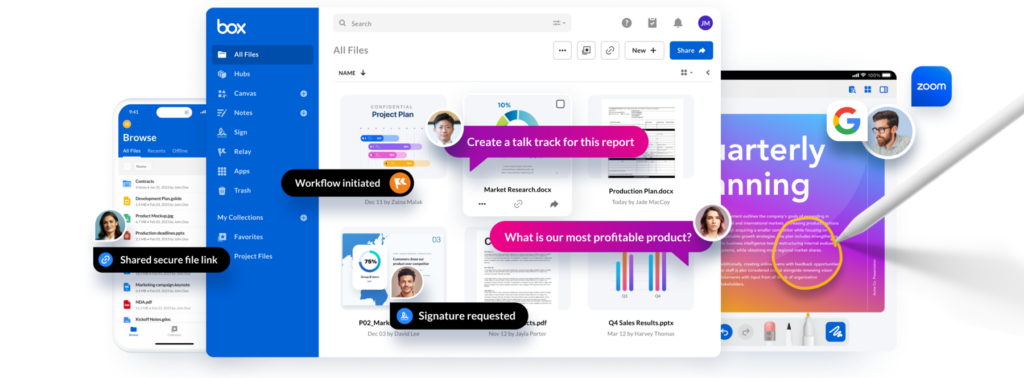
Serving as a secure cloud storage and collaboration app, Box is one of the best alternatives to Microsoft SharePoint for businesses keen on security.
There are a lot of features for robust cloud storage solutions and advanced collaboration with Box. Secure file storage, management and sharing by organizations. Enhanced team productivity via file comments and task assignments Documents created in Box can be shared instantly, while annotations may also be uploaded. It is also compatible with major apps such as Microsoft Office 365 and Google Workspace.
The common feature present in all Box subscriptions is security. The platform integrates industry-grade security principles like encryption, advanced threat detection, and data loss prevention. Compliance support is detailed to see all organizations comply with industry standards and regulations.
BoxWorks New Automations Within Box Are you ready to make endless workflow possibilities a reality at your fingertips? Why we use it: The workflows are customizable and the services offers integrations with business applications like Salesforce, Slack.
Box — one of the biggest benefits to using Box is that it has a secure and compliant platform, so if you are in an industry dealing with very sensitive information then this would be great for meeting compliance needs. Their collaboration features are strong allowing for better synergy on your team. Its compatibility with multiple apps also boosts its overall productivity.
But Box, although user friendly and quite useful could also be more expensive than other options available on the market; this can discourage a few SME with lower budgets. And some may I have an existing support structure around setup and customization.
Box has been built with security and collaboration in mind, all while providing a friendly user interface to access your files. The uncluttered design means that users can seamlessly access files and collaborative through additional layers of complexity, enhancing overall user experience.

Monday. Minorea — Touting itself as a “Work Operating System (WOS), airtable,com provides all of the project management and team collaboration tools that you would expect making it one of SharePoints top contenders.
Monday. As a visual and customizable way to manage projects / collaborate, Favro. The board-based system of the platform keeps a good on their tasks, progress and deadlines. It can automate mundane work, such as notifications and tasks in a workflow.
It has an easy-to-use user interface, drag-and-drop elements and flexible templates suitable for different types of projects. Monday. Flowingly. com is an all-in-one business process management solution integrable with multiple tools like Slack, Trello, Zoom to ensure data continuity from one application to anotherenddatejunctiontoBeDefinedendTime
File sharing, commenting, tagging and collaboration features help communication. There are also built-in reporting and analytics tools offering you insight into project performance and the efficiency of your team.
Monday. ProWorkflow’s looks and usability plays into these results quite heavily, especially if an easy-to-use project management solution is what your team requires. Its customization capabilities, along with integrations, make it flexible enough to serve a variety of business needs.
However, Monday. For companies that just need a basic document management service, Egnyte or IDrive for Business may be overkill. Although feature-rich, the tool can also be daunting for users not well versed with project management techniques. The cost also becomes exorbitant when considering extra features and integrations, which might invalidate it as a real solution for small teams.
Lets start with the colorful and easy to use interface of Monday. GallanCliq is also a good mention and it features board, which provides an easy-to-understand view of projects and tasks. The visualizations tools enable teams to get work done faster and better.
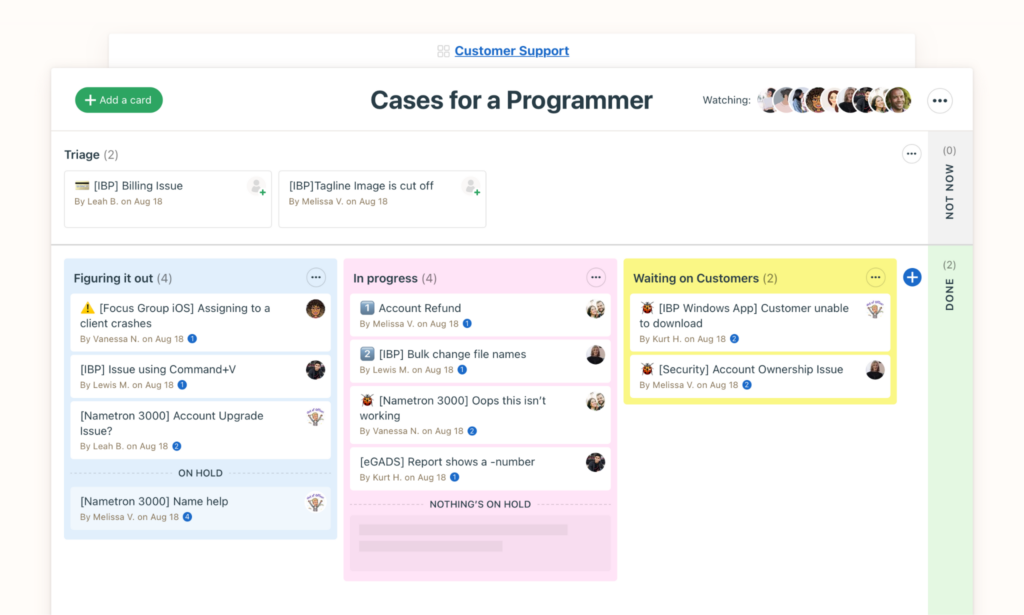
Basecamp offers an all-in-one solution for project management and team communication. Its simplicity makes it appealing for smaller teams that don’t need the heavy features of SharePoint.
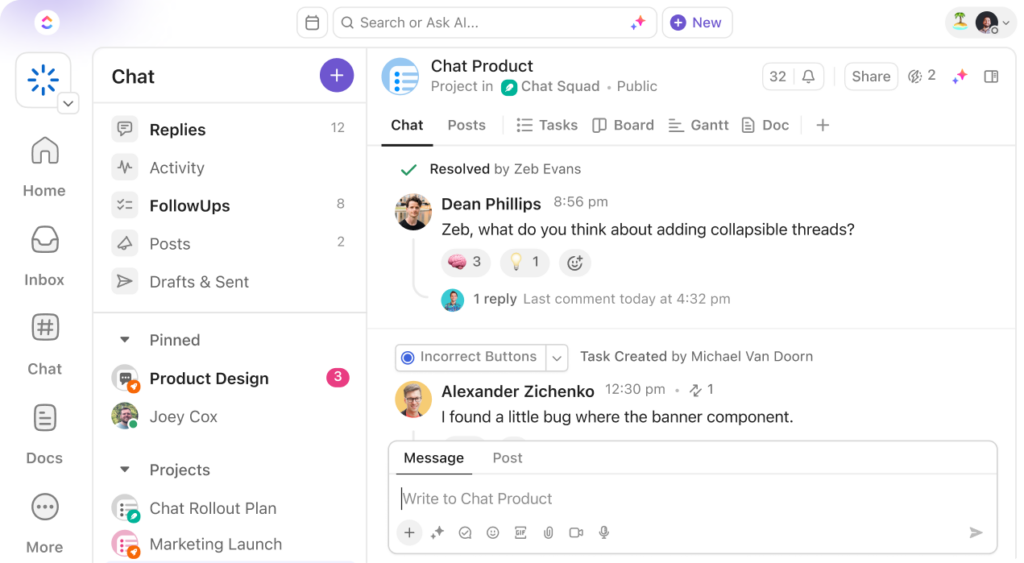
ClickUp is a highly customizable project management tool that offers more than just task tracking. It’s ideal for businesses looking to centralize workflows, document collaboration, and project management in one platform.
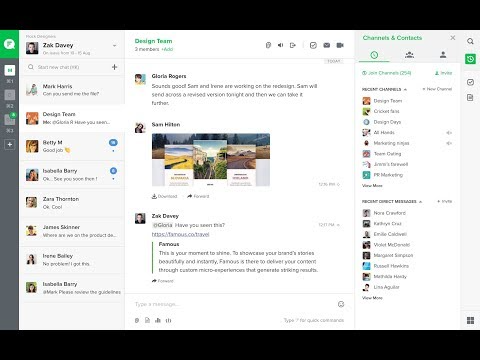
Flock is a team messaging and collaboration platform designed for small to medium-sized teams. It offers real-time communication, file sharing, and integrations, making it a budget-friendly alternative to SharePoint.
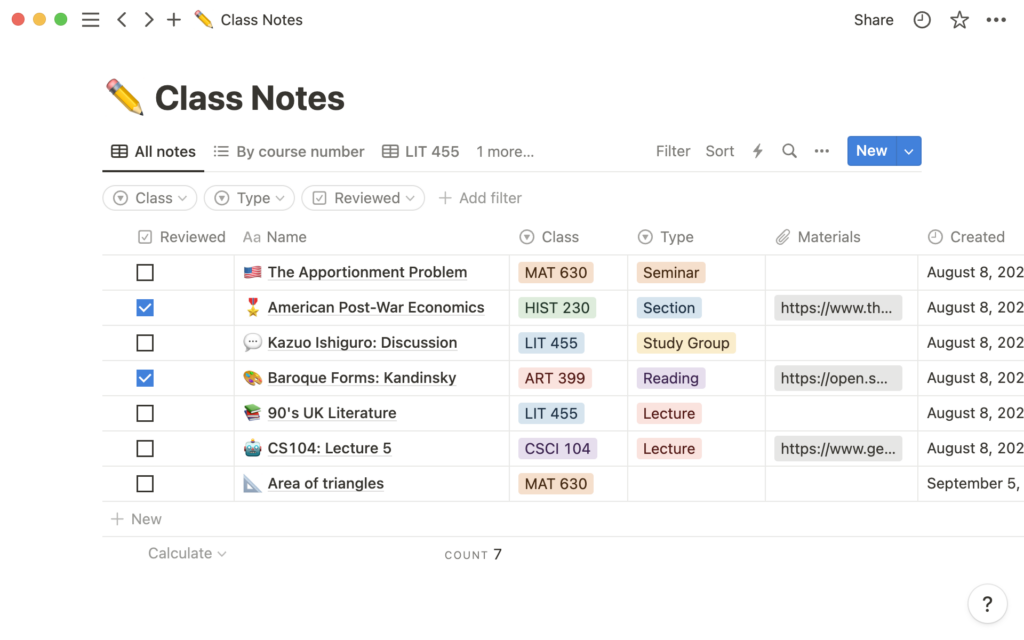
Notion is an all-in-one workspace that combines notes, tasks, and databases into a single platform. It’s popular among startups and smaller teams for its flexibility and ease of use, offering a different approach compared to SharePoint’s structure.
Notion is an excellent choice for teams looking for a user-friendly platform that combines collaboration and organization, though it may not be the best fit for larger enterprises with more demanding needs.
Microsoft SharePoint is undoubtedly an appealing tool for content management and collaboration but there are a few better options depending on the type of business. In terms of social collaboration and the advantage of open-source movement eXo Platform is the best suited. It is a good option for those organizations whose emphasis is on customization and enhancing the engagement of employees with their work.
Other notable alternatives include Slack, Google Workspace, ClickUp and Notion, each addressing a certain field of collaboration, work&tasks, and documents sharing. Google Workspace can be considered a leader of the cloud-based business tools thanks to its great AI based features and simultaneous operations. Zoho Docs offers an entire package of tools in addition to integration of other Zoho applications ensuring a hassle free experience. For those industries that give priority to data security and compliance, Box is a reliable solution. At the same time, Monday.com and Wrike offer user-friendly and adjustable systems for the project management process, which enhances the organization and productivity of the teams.
In the end, although SharePoint has remained at the forefront regarding team cooperation and document handling, these alternatives offer added value and features which can be ideal for certain aspects of an organization. Be it the social collaboration features of eXo Platform, the easy integration of Zoho Docs, or the enhanced security of Box, there is a solution for every need, and each also comes with its weaknesses.
It is the organization’s needs that determine the most appropriate platform which could be enhancing business processes, enhancing team interaction or winning in the rapidly transforming global environment. This guide does not include details on any one particular tool but rather its main focus is to equip the organizations with knowledge of what tools exist and what are some of their advantages, disadvantages, and screen resolutions. In the end, it would be the choice that enhances productivity, enhances operational efficiency, and enhances workplace collaboration which is the direction that businesses will keel towards.
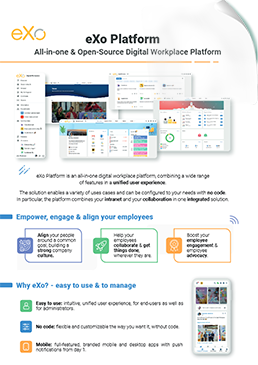
eXo Platform : The Open-Source
Digital Workplace Platform
Download the eXo Platform Datasheet and discover all the features and benefits


Download the eXo Platform Datasheet and discover all the features and benefits
( Your e-mail address will not be published)
I am a Digital Marketing specialist specialized in SEO at eXo Platform. Passionate about new technologies and Digital Marketing. With 10 years' experience, I support companies in their digital communication strategies and implement the tools necessary for their success. My approach combines the use of different traffic acquisition levers and an optimization of the user experience to convert visitors into customers. After various digital experiences in communication agencies as well as in B2B company, I have a wide range of skills and I am able to manage the digital marketing strategy of small and medium-sized companies.